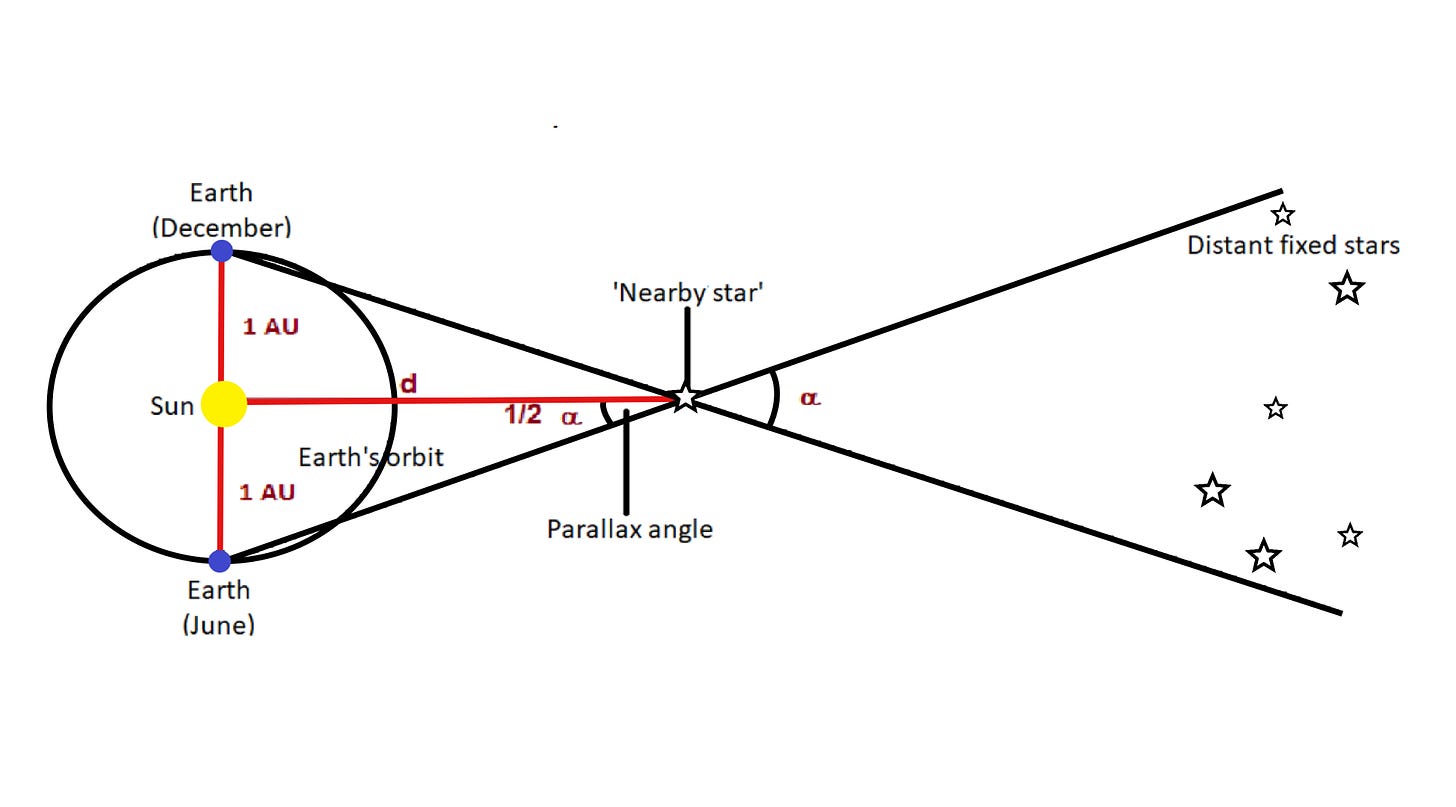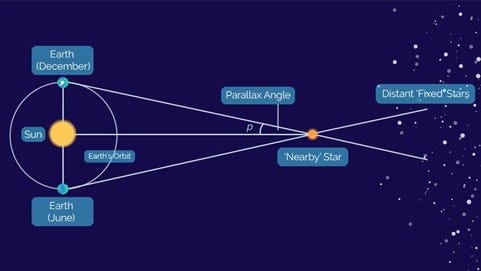Thursday, March 7, 2024
Heliocentricity and Theoretical Proofs (part three)
Stellar parallax and Stellar aberration don't prove anything
by StFerdIII
“If, therefore, under all circumstances, and especially in the comparison of days when the sign of aberration has changed, the apparent value of the geographical latitude [i.e., column (B) - (A)] is sensibly constant, it proves that the True Aberration is the same as the Received Aberration, or at least that one is not a multiple of the other.” (George Airy, 1871, p. 37)
Simply put, Airy could not confirm Stellar aberration. And he is far from alone.
The dogma
There are 11 commandments which are deployed as proof of Copernicanism. The observed phenomena used as proofs are however, cogently explained from another viewpoint and model. If another explanation can be applied, than Copernicanism with its attendant scientific theology and observational support is just a theory, and cannot be accepted as proof.
The standard list, used in textbooks and by online gatekeeps of what constitutes ‘proofs’ for Copernicanism beyond the ‘law of gravitational attraction’ includes:
1. Newton’s theory of gravitational attraction (dealt with in 2 previous posts)
2. The Stellar Parallax
3. Stellar aberration of the Sun
4. The Foucault Pendulum
5. The bulge at the Equator
6. Geosynchronous satellites (this post)
7. Space probe measurements (this post)
8. Retrograde motion (this post)
9. Star-streaming
10. The Doppler effect
11. Geometric complexity of geocentrism
This post will cover points 1 and 2, namely the Stellar parallax and aberration. Further posts will go through the rest of the standard list of supposed proofs for heliocentricity.
To Airy is human
George Airy in 1871, could not prove Stellar aberration, a claim that had gone unchallenged by that time, for almost 150 years. Using a water-filled telescope, Airy proposed to confirm both Bradley’s 1725 claim of stellar aberration, and that of the German Klinkerfues in 1867. As with Arago’s attempt in 1810, along with many others who tried and failed, Airy could find no proof of stellar aberration or light aberration (Antonello, 2014) . Airy was a committed Copernican who was dismayed at his own findings.
Many experiments have since reconfirmed Airy’s findings as other posts here have outlined (Michelson, Sagnac, Miller etc). Unfortunately the flat-earthers enthusiastically refer to the Airy experiment, giving ‘The Science’ a convenient and easy target to disparage the reality of what he and others discovered. We should not conflate factual evidence from real experiments with the non-science that the Earth is a pancake surrounded by an ice wall.
Claim 1: The Stellar Parallax Proves the Earth is Moving
This valid cosmological phenomenon has been consistently advocated as the vindicator of heliocentrism. Science textbooks and online apologia will usually declare that Friedrich Bessel (1784–1846) discovered heliocentrism’s long-awaited proof when in 1838, he observed a very slight shift in the position of the nearby star Cygnus against the background of a more distant star.
There are some who claim that Giovanni Pieroni, a friend of both Galileo and Kepler, may well have discovered the parallax in the early 17th century or 200 years earlier. Copernican astronomers usually praise Bessel as the great proof-giver of heliocentricity ignoring Pieroni (he was a Catholic after all). However, the ugly reality is that parallax does not prove heliocentrism.
What is it precious?
A standard definition of a stellar parallax is:
Parallax is the apparent displacement of an object because of a change in the observer's point of view.
This concept is of course central to the theory of Relativity which has been well savaged in other posts. A parallax is used to measure the distance to a star.
From this image, using the heliocentric view of a parallax, we can describe how a parallax measurement would work (Ostlie and Carrol, pp. 57–59).
1. In this model, the Earth is orbiting the Sun;
2. In December, whilst on one side of the orbit, we pull out our telescope and observe 2 stars which are viewed at the same time;
3. One star is near to the Earth, and the other appears further away;
4. For simplicity let’s assume that both stars are aligned vertically in the same plane, that is, one star is at a higher position in our telescope lens than the other, but both are on the same vertical line;
5. Six months later in June we take another look at these 2 stars;
6. If the stars are not in a vertical alignment any longer, and have deviated from the y axis, than we have a ‘parallax’;
7. The parallax motion means that the closer star appears to have shifted to the right off the vertical plane;
8. The shifting of the nearer star is due to the mobile orbit of the Earth around the Sun, since we have viewed this star from 2 different orbital locations, one in December, one in June, now separated by 186 million miles (the diameter of the Earth’s orbit around the Sun);
9. Since stellar parallax can now be detected among a select few stars, most astronomers have generalized this interpretation to include all Stars, and offer this as proof for the Earth’s movement around the Sun.
Sounds pretty good. When analysing Copernicanism, I found this to be a somewhat convincing argument.
Note that this evidence was proferred almost 300 years after Copernicus issued his theory, or in the case of Pieroni 80 years post-Copernicus, and was never referenced by Galileo in his dispute with the Church over evidence for heliocentricity. Stellar parallax is the second reported ‘observational proof’ in support of heliocentricity if we follow the standard narrative and credit Bessel in the mid-19th century. Stellar aberration (below) was the first reported proof, some 200 years after Copernicus if we ignore Pieroni. When the Church asked Galileo for proof, this is what it meant. The evidential proofs took hundreds of years to develop.
It proves…?
Yet when you look into the stellar parallax as with the Galilean phases of Venus, you will quickly uncover that the Tychonic geo-helio-centric system explains the same phenomenon quite nicely. This information will never be given to you, nor is it discussed within ‘The Science’ and its ‘educational systems’. This is called a bias.

